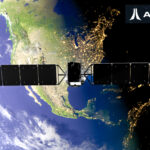
Sidus Space, Inc. (Nasdaq: SIDU) has announced the pricing of an underwritten public offering of 5,600,000 shares of its Class A common stock (or pre-funded warrants (“Pre-funded Warrants” in lieu thereof)).
Each share of Class A common stock (or Pre-funded Warrant) is being sold at a public offering price of $1.25 per share (inclusive of the Pre-funded Warrant exercise price) for gross proceeds of $7.0 million, before deducting underwriting discounts and offering expenses. All of the shares of common stock and Pre-funded Warrants are being offered by the Company. In addition, the Company has granted the underwriters a 45 day option to purchase up to an additional 840,000 shares of Class A common stock and/or Pre-funded Warrants to cover over-allotments at the public offering price, less the underwriting discount.
The Company intends to use the net proceeds from the offering for working capital and general corporate purposes.
The offering is expected to close on November 14, 2024, subject to customary closing conditions.
ThinkEquity is acting as sole book-running manager for the offering.
A registration statement on Form S-1 (File No. 333-282632) relating to the shares was filed with the Securities and Exchange Commission (“SEC”) and became effective on November 12, 2024. This offering is being made only by means of a prospectus. Copies of the final prospectus, when available, may be obtained from ThinkEquity, 17 State Street, 41st Floor, New York, New York 10004. The final prospectus will be filed with the SEC and will be available on the SEC’s website located at this direct link…
This information release by the company shall not constitute an offer to sell or a solicitation of an offer to buy, nor shall there be any sale of these securities in any state or jurisdiction in which such an offer, solicitation or sale would be unlawful prior to registration or qualification under the securities laws of any such state or jurisdiction.

































